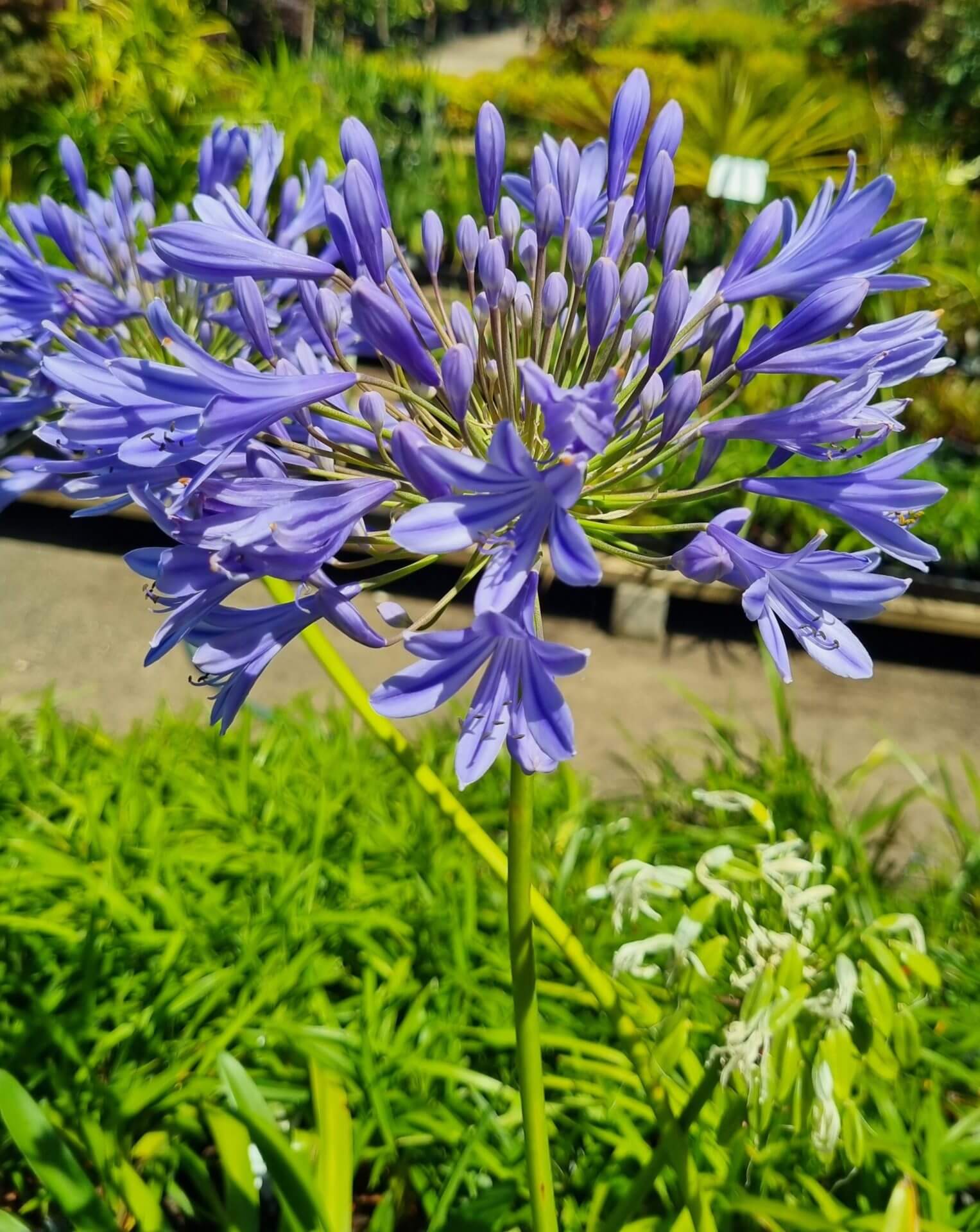Seasonal Agapanthus Treatment: Getting Ready For Wintertime and Summertime
Wiki Article
Grasping the Art of Agapanthus Treatment: Important Steps for Healthy And Balanced Development and Lively Blooms
In the world of cultivation, the growing of agapanthus stands as a fulfilling undertaking for those that look for to nurture these elegant blooming plants. From picking the right range to grasping pruning techniques, the trip towards growing flourishing agapanthus plants is complex and holds the essential to opening the full possibility of these botanical gems.
Selecting the Right Agapanthus Variety

When selecting the ideal Agapanthus selection for your yard, take into consideration factors such as climate viability, blossom shade, and development routine. Agapanthus, generally referred to as Lily of the Nile or African lily, comes in a range of shades ranging from tones of blue and purple to white. Select a flower color that matches your existing yard palette to create a harmonious landscape. Additionally, consider the environment in your region to make sure the Agapanthus selection you pick can thrive in your particular problems. Some selections are extra tolerant of cold temperatures, while others choose warmer environments. Understanding the development routine of different Agapanthus selections is essential for appropriate positioning within your garden. Some ranges have a clumping growth behavior, perfect for containers or borders, while others have a more dispersing nature, suitable for ground cover or mass plantings. By very carefully reviewing these variables, you can pick the perfect Agapanthus variety to boost the appeal of your garden.
Perfect Growing Conditions
Thinking about the ideal ecological requirements is necessary for successful Agapanthus farming. Agapanthus grows in well-draining soil with a slightly acidic to neutral pH degree. When planting, choose an area that gets complete sunshine to partial color. In hotter environments, giving some mid-day shade can stop scorching of the leaves. Agapanthus plants are delicate to cold temperatures and should be secured from frost throughout winter season months.To make certain healthy and balanced development and vibrant blossoms, plant Agapanthus bulbs at a depth of regarding 2-4 inches and area them 8-12 inches apart. Including raw material, such as garden compost, to the dirt can boost drainage and fertility, advertising robust root development. Mulching around the base of the plants assists preserve wetness and subdues weed growth. Routine watering is crucial, particularly throughout the growing season, to keep the soil continually damp however not soaked.
Watering and Fertilizing Tips
Preserving appropriate dampness levels and supplying crucial nutrients are key aspects in the care routine for Agapanthus plants. It is vital to strike an equilibrium when it comes to sprinkling Agapanthus. These plants favor constantly wet soil however are susceptible to root rot if overwatered. Throughout the growing season, water deeply as soon as a week, guaranteeing the dirt is well-draining to avoid waterlogging. In hotter climates or throughout durations of dry spell, even more constant watering might be needed to maintain the dirt equally damp. Nevertheless, minimize watering in the winter months to stop waterlogged conditions.Fertilizing Agapanthus is vital for advertising healthy development and prolific blossoms. Apply a balanced fertilizer, such as a 10-10-10 formula, in the early spring as new development emerges. Repeat this application every 6-8 weeks throughout the growing period. Prevent extreme fertilization, as it can result in lush vegetation at the expense of blossoms. Always adhere to the maker's guidelines for proper dilution and application techniques. By adhering to these watering and fertilizing suggestions, you can ensure your Agapanthus plants flourish and my explanation produce lively, lasting flowers.
Trimming Techniques for Agapanthus
Pruning Agapanthus plants at the ideal times and with appropriate methods is crucial for keeping their health and wellness and advertising ideal development and blooming. The optimal time to prune Agapanthus is in late winter or very early spring before new growth emerges. Beginning by getting rid of any type of yellowing or dead fallen leaves near the base of the plant. Cut them as short as possible without harming the arising shoots.Deadheading invested flowers can likewise redirect the plant's power right into generating more blooms instead than setting seeds. If you desire to gather seeds for breeding, leave some Get More Information blossoms to mature and dry on the plant.
Bear in mind to make use of clean, sharp devices to make specific cuts and decrease the danger of introducing conditions. Agapanthus. Normal pruning will help keep your Agapanthus looking neat and healthy and balanced while making sure a bountiful screen of lovely flowers
Taking Care Of Common Parasites and Diseases
After making certain correct pruning techniques for Agapanthus, it is crucial to deal with usual bugs Visit This Link and conditions that can impact the health and vigor of these plants. One usual bug that influences Agapanthus is the Agapanthus gall midget.Furthermore, Agapanthus plants can endure from origin rot if they are grown in poorly draining soil. By being alert and taking prompt activity versus bugs and diseases, you can help your Agapanthus plants prosper and produce dynamic flowers. Agapanthus.

Conclusion
Finally, grasping the art of agapanthus care includes picking the best range, offering optimal growing conditions, correct watering and feeding, suitable pruning techniques, and resolving typical bugs and conditions. By complying with these important actions, you can make sure healthy and balanced development and vibrant blooms for your agapanthus plants. Remember to regularly keep track of and keep your plants to advertise their total wellness and long life.To ensure healthy growth and vibrant blossoms, plant Agapanthus light bulbs at a deepness of regarding 2-4 inches and space them 8-12 inches apart. By complying with these watering and feeding pointers, you can ensure your Agapanthus plants prosper and generate vivid, lasting blooms.
One typical pest that impacts Agapanthus is the Agapanthus gall midget. In addition, Agapanthus plants can experience from origin rot if they are grown in improperly draining pipes dirt. By adhering to these essential steps, you can make sure healthy development and lively flowers for your agapanthus plants.
Report this wiki page